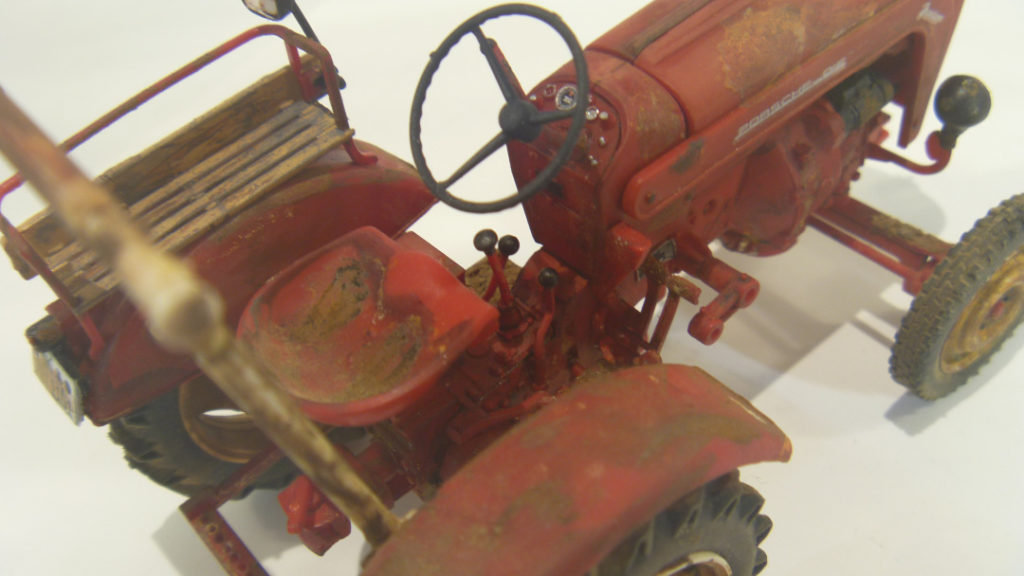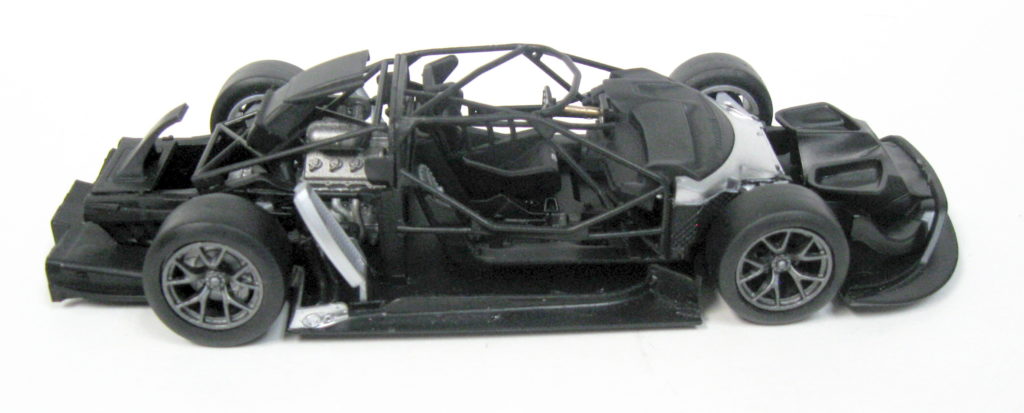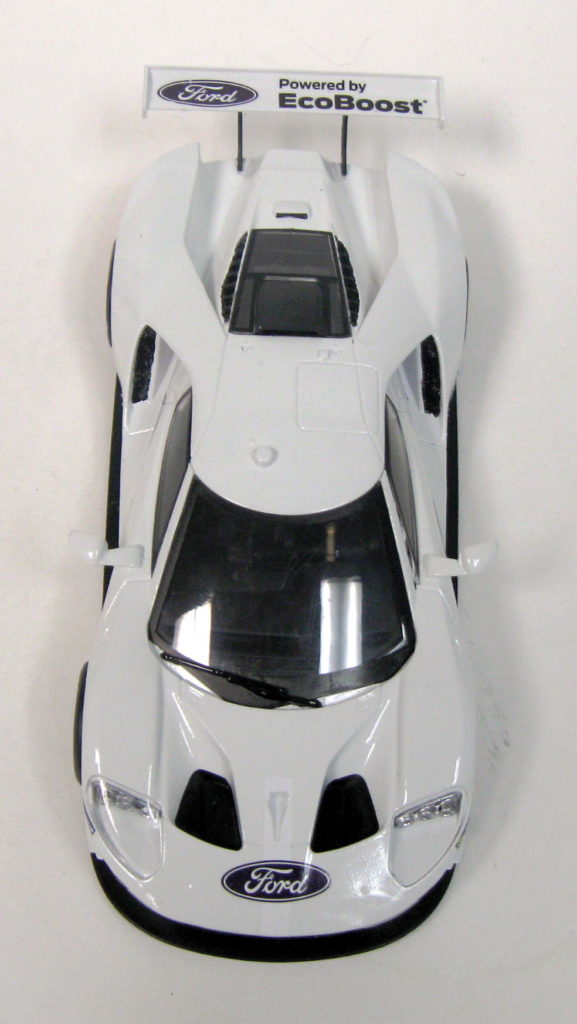Mike Crespi builds and reviews Revell’s Porsche Junior Tractor
It’s a pretty uncomplicated kit to build, and a snap kit too with pretty good detail. It’s not a curbside. Unlike any other model vehicle I’ve built this one builds around the engine. The engine and transmission is one assembly.
You then attach the rear end and front axle and everything else. I decided to build it weathered. Looking for pictures of the 1:1 tractor on line I found over 20 of them of a tractor that’s for sale for $48,000. It’s in mint condition but I was hoping to find an unrestored one. I found other rusty tractor photos to help me with the weathering.
When you open the box it’s only about ½ full, no large body, chassis or interior tub parts. Most of the plastic is red, you can almost build it without painting it, just a few details. I started with flat red since it will be weathered. It looks like it can mostly assembled before weathering.
Here’s photos of what’s inside the box:

Well, here’s the engine/chassis going together. The engine/transmission/rear end essentially form the main
structure of the tractor. I still have to weather it up and add the rust and dirt. Here’s the rear wheels:

Here’s the main assembly so far:

This model is certainly going together easily, very little flash and the parts fit together well. You can almost get away without painting. Here’s more photos of it nearly completed.

This kit has a nice decal sheet but the directions doesn’t quite show where they all go.
I’ve been using the Rust All weathering kit along with a Rust antiquing kit by Sophisticated Finishes which has a gray iron paste and a chemical to turn it into real rust. I also used some rust colored pastels.
Well, it was a nice easy build, I enjoyed building it too. A good quality kit. Here are some finished photos:

















